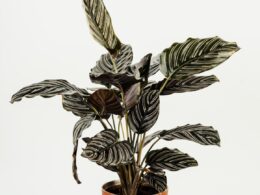In this article, we will discuss the pros and cons of hibiscus plant care, as well as how to select the right soil, water and fertilize your plants properly. We will also cover propagation and repotting tips for hibiscus plants.
Pros and Cons of Hibiscus Plant Care
If you are thinking about adding a hibiscus plant to your garden, there are a few things you should consider before making your purchase. Hibiscus plants are generally low-maintenance, but they do require some care and attention in order to thrive. Let’s take a look at the pros and cons of hibiscus plant care.
The Pros
- Hardy and tolerant of most climates;
- low-maintenance;
- can be grown in pots or in the ground;
- flowers are beautiful and come in a variety of colors, like red, white, pink, yellow or purple;
- non-toxic to pets (in the majority of cases).
The Cons
- Susceptible to pests and diseases;
- needs regular watering and fertilizing;
- can become leggy if not pruned properly;
- it is much better to care for hibiscus outdoors.
The Perfect Soil for Growing Hibiscus
Now that you know a little bit more about hibiscus plant care, let’s discuss how to select the right soil for your tropical hibiscus plants. These flowers prefer well-drained, sandy soils. If your soil is heavy or clay-like, you may need to amend it with some organic matter before planting. You can also grow hibiscus plants in pots or containers filled with a quality potting mix.
Hibiscus Care: Sunlight & Temperature
Hibiscus are beautiful, tropical flowers that can add a splash of color to any garden. However, they can be finicky plants, and it’s important to provide them with the right combination of sunlight and temperature. Hibiscus should be planted in an area that receives full sun for at least six hours per day. At home, keep it on a window sill with a subtle net curtain. In the garden, keep it in half shade. In addition, the temperature should be warm, preferably between 70 and 85 degrees Fahrenheit. If the temperature dips below 50 degrees Fahrenheit, the hibiscus will likely go into shock and drop all of its leaves. With proper care, hibiscus can thrive in almost any environment. Just be sure to give them plenty of sun and warmth, and they will reward you with their beautiful blooms.
Watering & Fertilizing Tips
When it comes to watering hibiscus plants, it is important to keep the soil evenly moist but not soggy. Water your plants deeply once or twice per week, depending on the weather and the size of your plant. Be sure to check the soil before watering, as hibiscus plants are sensitive to over-watering. Keeping them at home might make them dry after blooming. Keep an eye on that and mist it in the winter.
Fertilizing hibiscus plants is also important for healthy growth. During the flowering period, use a balanced fertilizer formulated for blooming plants and apply it according to the package directions. You can fertilize hibiscus plants every few weeks during the growing season, or once per month if they are grown in pots.
Propagating & Repotting
Hibiscus plants can be propagated every year by seed or cuttings. Seeds should be sown in sterile potting mix and kept warm until they germinate. Cuttings should be taken from new growth and rooted in a well-draining rooting medium. Once your hibiscus plant has been propagated, you will need to repot it into a larger pot or container.
When repotting hibiscus plants, be sure to use a quality potting mix and a pot that is only slightly larger than the root ball. Water your plant well after repotting and place it in a location with bright, indirect light.
The Perfect Pot for Hibiscus Plants Indoors
When it comes to hibiscus plants, finding the perfect pot can make all the difference. These tropical plants thrive in humid environments, so they need a pot that will help the retention of moisture. Furthermore, hibiscus plants have deep roots, so they need a pot that is relatively deep. When choosing a pot for your hibiscus plant, it is important to select one that has drainage holes in the bottom. This will allow excess water to drain away, preventing the roots from sitting in water and rotting. Also, be sure to choose a pot that is large enough to accommodate the plant’s growth. A small pot will quickly become cramped, and this can stunt the plant’s growth. With the right pot, you can help your hibiscus plant to thrive indoors.
Common Issues with Hibiscus
Hibiscus are lovely flowering plants that come in a wide variety of colors and sizes. However, they can also be susceptible to a number of problems, including pests and diseases. Aphids, mealybugs, and scale are all common pests that can attack hibiscus plants. These pests can not only damage the plant itself, but also spread disease. Hibiscus plants can also be affected by a number of fungal diseases, such as powdery mildew and rust. These diseases can cause leaf discoloration and defoliation, and in severe cases, can kill the plant. Fortunately, there are a number of products available that can help to control pests and diseases. By taking proactive measures, you can help to keep your hibiscus plant healthy and beautiful.
Hibiscus Plant Care Review
By following these tips for hibiscus plant care, you can enjoy beautiful blooms all summer long! Hibiscus plants are relatively easy to care for, but they do require some attention in order to thrive. With proper watering, fertilizing and pruning, you can keep your hibiscus plant looking its best all season long. Thanks for reading! Hopefully this article has given you some helpful information on hibiscus plant care. Do you have any hibiscus plant care tips to share? We would love to hear from you.



















